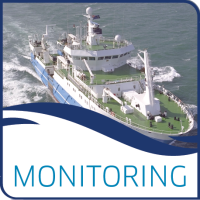Scottish Marine and Freshwater Science Vol 11 No 7
The aim of this report is to determine the feasibility of replacing the synchronous fluorescence scanning (SFS) method of analysis of biliary polycyclic aromatic hydrocarbons (PAHs) metabolites with a high-performance liquid chromatography with fluorescence detection (HPLC-F) method. This is being considered because it was highlighted during a recent international interlaboratory calibration (BEQUALM, 2020), organised by the ICES Working Group on Biological Effects of Contaminants (WGBEC), that overall the HPLC-F method performed better than SFS. SFS is a rapid test and more cost effective than HPLC-F, however, HPLC-F is more specific and produces more reliable results than SFS. HPLC-F is also the recommended method for long term monitoring projects (OSPAR 2009, ICES 2005). However, Marine Scotland Science have a long time series of data using the SFS method which may be lost following a method change. Conversion factors can be applied to allow comparison between the two methods, however, these are not always reliable. The Marine Environment Assessment Group currently have an HPLC instrument with a fluorescent detector, which could be used for PAH bile metabolites analysis. Although there will be some cost in implementing the HPLC-F method at MSS, this will be minimal as no capital expenditure is required. A method was developed at MSS in 2002 (Richardson 2002), which could be reviewed and once validated applied to routine monitoring.
Data and Resources
| Field | Value |
|---|---|
| Publisher | |
| Modified | 2020-12-07 |
| Release Date | 2020-12-07 |
| Identifier | 69b7947b-31b3-4c7b-a350-7b0fa5f890e8 |
| License | UK Open Government Licence (OGL) |
| Public Access Level | Public |


